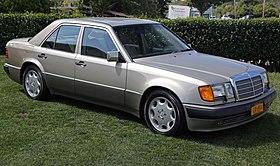For decades since the advent of the Internal Combustion Engine, camshafts have been responsible for actuating the poppet valves (intake and exhaust) to draw air fuel mixture into the cylinder for combustion and purging the cylinder off spent gases, or exhaust gases, for the next intake of fresh mixture.
In the past, camshaft tuning was a compromise, meaning engineers had to take into account the engine's application: will it spend its time in bumper-to-bumper traffic or screaming itself off at higher rev range.
Several innovations had been invested to overcome the restrictive nature of camshafts such as variable valve timing and lift, an innovation that alters the opening and closing time of the valves (timing) and how far it opens (lift). However, it still does not change the fact that camshafts, like any mechanical devices, are analog in nature: meaning the valves lack individual control due to being solidly locked to the camshafts. Enter Koenigsegg's Freevalve camless engine.
In the past, camshaft tuning was a compromise, meaning engineers had to take into account the engine's application: will it spend its time in bumper-to-bumper traffic or screaming itself off at higher rev range.
Several innovations had been invested to overcome the restrictive nature of camshafts such as variable valve timing and lift, an innovation that alters the opening and closing time of the valves (timing) and how far it opens (lift). However, it still does not change the fact that camshafts, like any mechanical devices, are analog in nature: meaning the valves lack individual control due to being solidly locked to the camshafts. Enter Koenigsegg's Freevalve camless engine.
With the camless engine, rather than being actuated by a camshaft, the valves are actuated by high pressure air via pneumatic actuators. According to Christian von Koenigsegg, the founder of Koenigsegg supercar firm and a visionary who came up with innovative approaches such as the bonkers hybrid gearless Regera, traditional camshaft is akin to playing a piano with a broomstick and taking away the camshaft is akin to playing the piano with your fingers. Imagine taking a broomstick and try hitting the piano keys. You will find you have less control on which key to actuate as the broomstick will hit virtually all keys. Remove the broomstick and you have better control on which keys to actuate.
Going back to conventional camshaft engine, say you have 4 valves per cylinder (2 intake valves and 2 exhaust valves). Both intake valves are open simultaneously during the intake stroke and vice versa.
With the camless engine, the ECU does not necessarily open all valves but rather take into account engine load and rpm to open just one or two valves to ensure efficiency at varying engine operations. This entails better control over the actuation of valves and theoretically may boost performance and efficiency, which Koenigsegg claimed an improvement by 30%. A huge claim indeed.
Going back to conventional camshaft engine, say you have 4 valves per cylinder (2 intake valves and 2 exhaust valves). Both intake valves are open simultaneously during the intake stroke and vice versa.
With the camless engine, the ECU does not necessarily open all valves but rather take into account engine load and rpm to open just one or two valves to ensure efficiency at varying engine operations. This entails better control over the actuation of valves and theoretically may boost performance and efficiency, which Koenigsegg claimed an improvement by 30%. A huge claim indeed.
Most folks may be familiar with timing belt or timing chain. Camless engine dispose of the need for it as there are no camshafts. This may mean no more worries of the belt snapping at inopportune moment.






